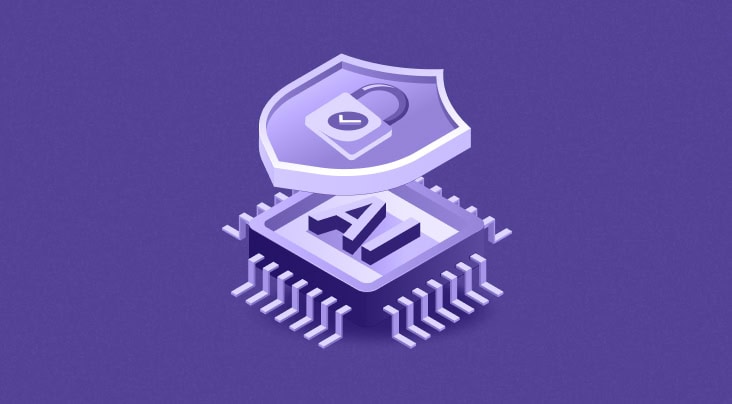What is a CAIO?
The Chief AI Officer (CAIO) is a senior executive responsible for overseeing the development, strategy, and implementation of AI technologies across the organization. With a holistic view of AI, the CAIO integrates data, solutions, and teams to drive cohesive and effective AI adoption.
Why Do Companies Need a CAIO?
Organizations are increasingly integrating AI into their core operations, moving beyond experimental uses. While AI offers opportunities to boost productivity, scale, and operational reach, it also presents risks. Several companies have faced significant challenges and reputational damage due to ineffective or irresponsible AI deployment.
Customer expectations are higher than ever with AI in play, and new regulations will add further responsibility for organizations using it. Given these challenges, strong leadership to manage and oversee AI operations is crucial.
Why do companies need a CAIO? The answer is three-pronged.
- To develop and implement a comprehensive AI strategy across the organization.
- To ensure AI solutions properly preserve data entitlements and privacy, even as they change over time.
- To protect AI solutions against new and evolving attacks specialized against them.
A CAIO helps organizations navigate challenges in the era of AI by ensuring ethical and regulatory compliance, contributing to the organization's overall strategic vision, bridging the gap between technological advancement and corporate governance, and functioning as a responsible AI adopter and pioneer.
What are the Key Responsibilities of a CAIO?
As AI evolves rapidly, organizations face new opportunities, challenges, and responsibilities. The CAIO plays a critical role in navigating these complexities by establishing the course of the organization's AI strategy, formulating concrete governance policies, developing frameworks for transparent AI use, forming cross-functional teams that govern AI ethics, and aligning all AI use with ethical standards and the organization's broader objectives.
The CAIO role is inherently dynamic, demanding rapid adaptation to an evolving regulatory landscape. Internally, one of the biggest challenges is navigating overlaps with other departments. Since AI often operates in silos across major functions, the CAIO must work quickly to foster collaboration and streamline efforts.
The key responsibilities of a CAIO include:
Strategic AI Vision
A CAIO's foremost challenge is designing and implementing a strategic AI vision aligned with the organization’s business goals.
Generative AI, while revolutionary, presents ambiguities in its responsible and legal adoption, underscoring the need for a clear framework that defines AI's role within the organization.
The AI vision must communicate to all stakeholders how AI initiatives create competitive advantages, enhance operations, and elevate core functions. While technology adoption is key, the strategy must focus on areas delivering the greatest value, using measurable standards to guide decisions. For instance, a hospitality company may prioritize customer experience, while a logistics firm might focus on optimizing supply chain and vendor management.
Crucially, the vision must anticipate AI’s evolution, incorporating mechanisms for continuous assessment and adaptation to emerging trends and regulations. This forward-looking approach fosters innovation, ensures resilience, and positions the organization to stay ahead in a dynamic market.
AI Governance & Risk Management
The CAIO plays a crucial role in managing the evolving risks of AI, as organizations navigate uncharted territory. With new AI capabilities come new risks, including data privacy issues and misinformation. The CAIO must establish a robust governance framework to ensure the safe, ethical, and compliant development of AI across the organization.
The CAIO must create clear guidelines, accountability measures, and control mechanisms to mitigate these risks, addressing data handling, model validation, and usage. A solid understanding of emerging regulations, such as the EU's AI Act, is essential for ensuring compliance with current and future laws, minimizing legal and reputational risks.
The CAIO must also oversee internal audits to identify and address risks in AI systems, which can undermine decision-making and customer trust. A collaborative, cross-departmental approach is key to building a resilient governance framework that supports sustainable, responsible AI initiatives.
Ethical AI Management
Ethical AI management extends AI governance and risk management, addressing unique challenges from regulatory requirements, public scrutiny, and operational demands. As organizations use AI in sensitive areas like hiring, healthcare, and credit scoring, ethical considerations must align with specific contexts to ensure fairness, transparency, and accountability.
To achieve this, the CAIO should embed ethical principles into AI policies through a comprehensive code of ethics, fostering consistency and guiding responsible AI use. Ongoing oversight, regular assessments, and cross-departmental collaboration are crucial for making ethical AI management a shared responsibility. These practices build trust with stakeholders and ensure AI usage evolves responsibly while maintaining compliance and public confidence.
Internal & External Collaborations
The role of a CAIO is inherently dynamic, evolving alongside advancements in AI capabilities. This fluidity poses a key challenge: evaluating a CAIO's effectiveness. Unlike other C-level positions, the CAIO's role spans uncharted business domains, making both internal and external collaboration a critical metric of success.
Internally, the CAIO must unify AI usage across departments, aligning risk management and business objectives under a cohesive strategic AI vision. This involves ensuring that AI initiatives support each department’s goals while fostering a culture of shared ownership. Effective cross-functional collaboration transforms AI from a tool into a strategic asset.
Externally, the CAIO serves as the organization’s primary liaison with regulators, industry partners, and the broader AI community. This includes building partnerships, advocating for transparency, contributing to R&D breakthroughs, and responding to regulatory changes. By showcasing the organization's commitment to ethical AI innovation, the CAIO helps establish a reputation as a responsible AI leader.
Through these collaborative efforts, the CAIO ensures AI initiatives are not only efficient but also aligned with organizational values and societal expectations.
How Does the Role of CAIO Compare with CDO, CDAO, CIO, and CTO?
Unlike other C-level roles related to technology and data, the CAIO uniquely focuses on the strategic integration and governance of AI technologies to transform organizational operations.
Comparison of C-Level Roles Related to Technology and Data
|
Role
|
Primary Focus
|
Key Responsibilities
|
| Chief Data Officer (CDO) |
Ensuring the quality, security, and accessibility of organizational data. |
Oversees data governance, infrastructure, and compliance. |
| Chief Data and Analytics Officer (CDAO) |
Leveraging data insights to drive business impact. |
Combines data management and analytics to support decision-making and improve performance. |
| Chief Information Officer (CIO) |
Aligning IT infrastructure with business objectives. |
Manages IT systems, technology strategy, and operational goals. |
| Chief Technology Officer (CTO) |
Driving innovation and long-term technical growth. |
Leads technological research, product development, and strategic technical initiatives. |
| Chief AI Officer (CAIO) |
Strategic integration and governance of AI technologies. |
Develops AI strategy, ensures ethical use, manages risks, and aligns AI initiatives with organizational transformation goals. |











































